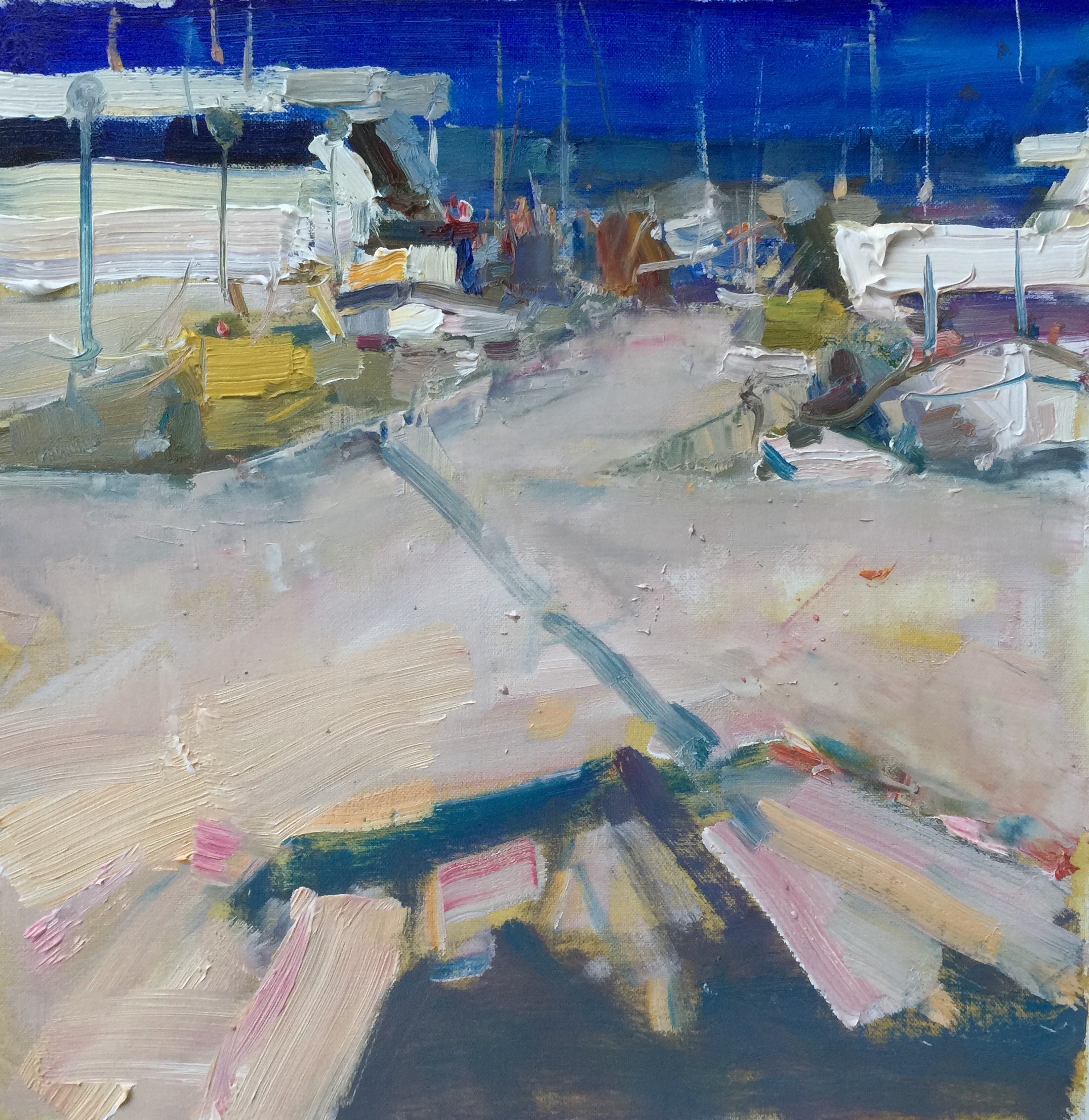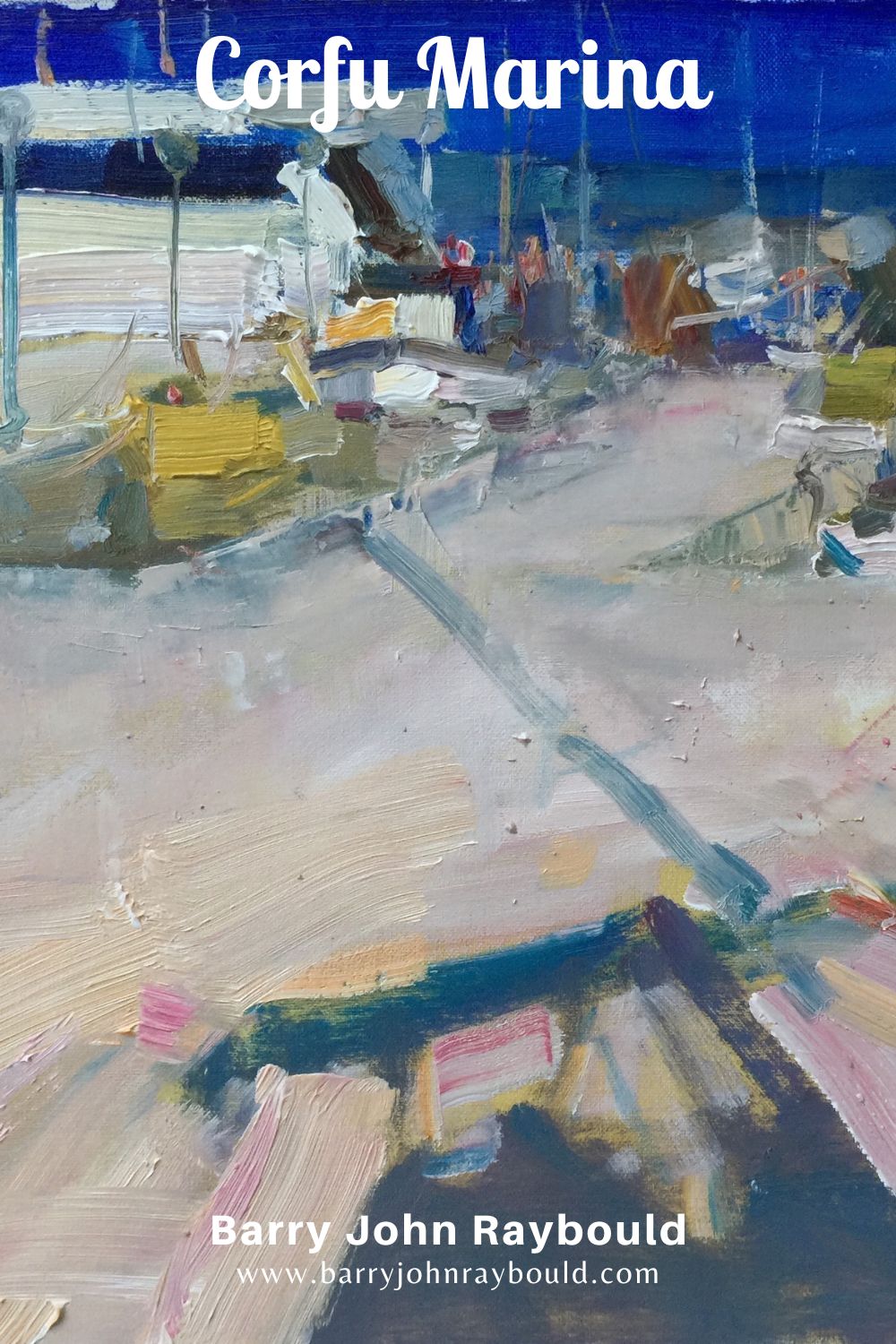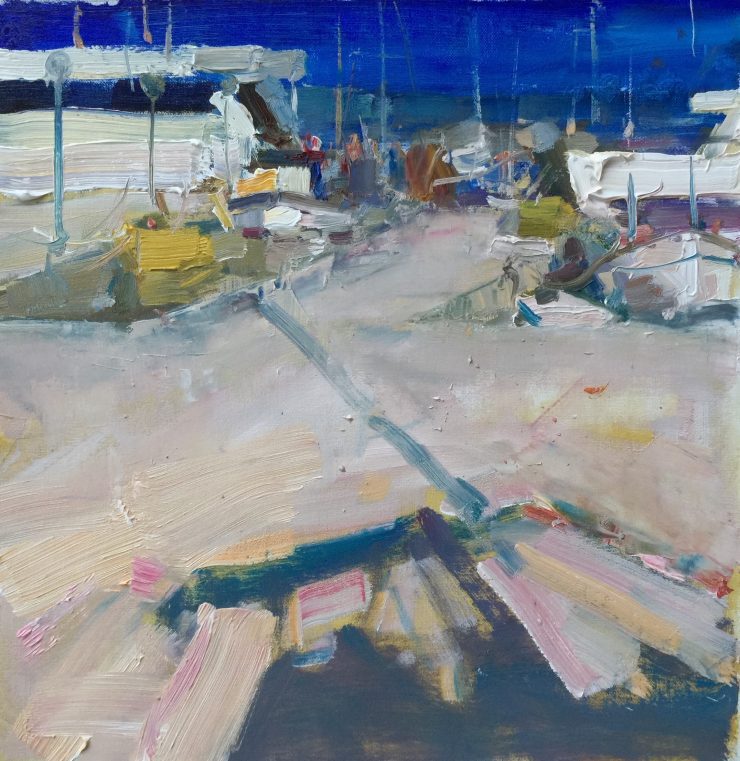This is a painting I completed on my recent trip to Corfu. I was attracted to the dynamic shape of the shadows falling on the ground, and the rhythms of the masts of the sailing boats.
Read on to learn some more of the techniques and principles I used in this painting of Corfu Marina.
Techniques and principles used in this painting
The basic color harmony I used was a triadic red, yellow, blue color harmony, in which the red was very grayed out, plus a few saturated color accents. These accents added to the dynamicism of the composition.

I used a several layers in this painting. The underlayer is very thin and grayed out, with a few scumbles of white on top of it. The final brushwork was done with a loaded brush, and is fairly heavy impasto. I took some artistic license in the sky to add a more dramatic effect to the painting.
The composition also uses the principle of counterpoint in order to provide both an organizational structure to the painting, and to create a dynamic lead in to the composition.
Online painting classes
Here are the online painting classes in the Virtual Art Academy® Apprentice Program that teach the techniques I used in this painting:
- B06 What Is Saturation?
- B07 How To Make Grays
- B11 What Are Complements?
- D04 Contrast Of Saturation
- F06 Thick & Thin
- H07 Contrast of Brushwork
- H11 Complementary Color Harmony
- O04 Brushwork Perspective
- O08 Rhythm of Shapes
- P10 Multicolored Brushstrokes





































Can you explain counterpoint, please. I am a little confused by the blue shadow across the road. Is it coming from behind the viewer or from the left?
Counterpount is a technique in which you add a line going in the opposite direction from other lines to emphasize those other lines and at the same time prevent the eye sliding out of the picture.
What media is this?
It is oil paint. I use a mix of thick impasto paint, and thin washes that look a little like watercolor, but is actually oil paint thinned with Liquin, or refined turpentine.